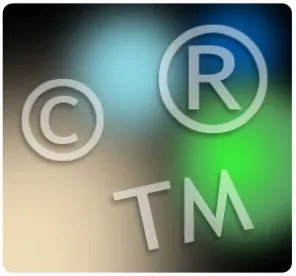The videoconferencing platform Zoom has become a ubiquitous part of the new normal and an integral part of American life during the recent coronavirus pandemic. With such widespread adoption at an exponential pace, does the brand risk becoming a generic term like Aspirin, Elevator, and Thermos? Or will the brand be able to hold on to its trademarked ground like Kleenex, Band-Aid and Xerox, which are still legally protected trademarks even though they are frequently used as generic terms.
Which one will it be? Aspirin, Elevator, Thermos … Zoom OR Kleenex, Band-Aid, Xerox … Zoom
The critical question here will be whether the Zoom mark has become a common verb such that the term no longer serves a source-identifying function.
Genericide and the Effects of Advertising
Once a mark is generic, it is in the public domain for use by all, including competitors. Under U.S. law, genericide is a form of abandonment. A mark will be deemed to be “abandoned” if: (1) its use has been discontinued for three years with intent not to resume such use; or (2) when the mark becomes the generic name for the goods or services on or in connection with which it is used.
Courts have defined “generic” as “the genus of which the particular product or service is a species.”[1] In other words, a generic term is “the name of the product or service itself – what [the product] is, and as such . . . the very antithesis of a mark.”[2] In the case deeming ASPIRIN generic in the United States,[3] the late Judge Learned Hand set forth a standard for determining whether a mark has become generic:
“The single question, as I view it, in all these cases, is merely one of fact: What do the buyers understand by the word for whose use the parties are contending? If they understand by it only the kind of goods sold, them [sic], I take it, it makes no difference whatever what efforts the plaintiff has made to get them to understand more. He has failed, and he cannot say that, when the defendant uses the word, he is taking away customers who wanted to deal with him, however closely disguised he may be allowed to keep his identity.”
A trademark can become the generic name for the goods or services on or in connection with which it is used if the trademark owner fails to use the mark correctly on its goods or services and in advertising, fails to prevent infringements and generic uses, or fails to educate the public as to the proper generic name for the goods or services.[4]
Perhaps one of the earliest marks to become generic was LINOLEUM (1878); and one of the first cases where cancellation was invoked under the Lanham act based solely on the fact that the mark had become generic was FORMICA (1978).[5] In FORMICA, the FTC alleged that the term had become “the common descriptive name for decorative plastic laminates used on counter tops, table tops and the like.”[6] The implication of the FTC’s allegation was that no material differences in quality existed between the plastic laminates produced by the Formica Corporation and those offered for sale by its competitors and therefore, all manufacturers of such products should be able to describe their wares as FORMICA. The FTC’s attempt to cancel the mark FORMICA ultimately proved fruitless, however, and the mark was spared from becoming generic.
Other marks that were once on their way to becoming generic include XEROX, JEEP, BAND-AID, and KLEENEX. These marks continue to be protected by active trademark registrations, and thus are spared from genericide for now. To prevent these trademarks from becoming generic, each trademark owner ran aggressive advertising campaigns aimed at educating consumers to view its trademark as a source identifier as opposed to a common name for its goods and/or services.
Examples of the Ad Campaigns
Xerox Corp.’s
“You can’t Xerox a Xerox on a Xerox. But we don’t mind at all if you copy a copy on a Xerox® copier.”
Chrysler LLC’s
“They invented “SUV” because they can’t call them Jeep®.”
Johnson & Johnson Corp.’s
“I am stuck on Band-Aids brand cause Band-Aid’s stuck on me.”
Kimberly-Clark Corp.’s “‘Kleenex’ is a brand name…and should always be followed by an ® and the word ‘Tissue.’ [Kleenex® Brand Tissue] Help us keep our identity, ours.”
The critical question for Zoom will be whether the Zoom mark has become a mere common verb, falling within the generic mark category and therefore becoming ineligible for ongoing trademark protection. Between “Zoom meetings,” “Zoom trivia,” “Zoom yoga”, “Zoom weddings,” and Zoom just-about-anything-else-you-can-imagine, the company’s name has quickly evolved into a kind of shorthand for a livestreamed substitution for physical attendance in the new normal. While sudden popularity and market dominance such as this can be the beginning of genericide, it does not have to follow that trajectory.
Strength of the Zoom Mark
Courts recognize four trademark categories:
-
Generic marks,
-
Descriptive marks,
-
Suggestive marks, and
-
Arbitrary or Fanciful marks.[7]
At one end of the spectrum, warranting the greatest level of trademark protection, stand arbitrary or fanciful marks—those words which offer no inherent description of the product (i.e., Apple, Kodak, Verizon, Rolex).
On the other end of the spectrum lie generic marks—those made up of common descriptors to which courts afford no trademark protection (i.e., Escalator, Trampoline, Videotape).[8]
Zoom is arguably a suggestive mark. A suggestive trademark has wording that suggests characteristics of the underlying goods or services without saying it outright (i.e., Netflix, AirBus, KitchenAid). As stated in the USPTO trademark manual[9], suggestive trademarks “require imagination, thought, or perception to reach a conclusion as to the nature of those goods or services.”[10] Suggestive marks belong to the category of strong trademarks known as ‘inherently distinctive marks’ that do not require a showing of acquired distinctiveness for registration. While a suggestive mark may contain wording that hints at the goods or services, a bit of a leap of imagination is required.
On the other hand, merely descriptive marks tell you something about the goods or services, such as an ingredient, quality, characteristic, feature, function, purpose or use and are generally not registrable on the Principal Register without acquired distinctiveness. Therefore, a suggestive mark like Zoom is generally stronger than a descriptive mark.
Avoiding Genericide
Marks are at particular risk if no generic term exists, such as in cases where the trademark owner is the first entrant and, thus, the mark is adopted as the product name. Generally, the more typical victim of genericide is a first-of-its kind product — often patent-protected — that creates an entire new genre of goods. Usually a trademark becomes the name for a type of product when there is no other generic word for it. When upstart competitors start making rival versions, consumers use the name they know. Despite all its pandemic-fueled growth, Zoom is not the first of its kind. Videoconferencing services existed before Zoom exploded this spring — including Skype, FaceTime, Google Hangouts, and Microsoft Teams — and consumers know what to call them.
Moreover, the legal consensus has evolved on how consumers use trademarks in a generic sense. In 2017, the Ninth Circuit ruled that “Google” had not succumbed to genericide despite widespread use of “google” as a generic verb for searching the internet.[11] The Lanham Act states that it is an “accepted concept that a trademark can serve a dual purpose.”[i] The Court in Google emphasized this principle in stating that simply because a mark is used as a different form of speech (a verb or noun as opposed to an adjective), does not mean that the mark loses its source-identifying function. Further, the Court held the fact that a mark is used as a verb does not mean that it is no longer being used to identify the source—the dual purpose nature of a trademark allows for verb use while still maintaining its source-identifying function. The same is likely true for Zoom. People are using the term generically to mean videoconferencing, but they also know that Zoom is a particular platform, distinct from Skype, Google and so on.
As consumers become savvier about brand choices, especially in the digital age, the phenomenon of genericide occurs less, as has been the trend in recent years. Hence, it is more likely than not that Zoom will avoid the fate of genericide.
[1] Surgicenters of America, Inc. v. Medical Dental Surgeries, Co., 601 F.2d 1011, 1014 (9th Cir. 1979).
[2] 2 J. Thomas McCarthy, Trademarks and Unfair Competition § 12:1[1] (4th ed. 1997).
[3] Bayer Co. v. United Drug Co., 272 F. 505, 509 (S.D.N.Y. 1921).
[4] 1-2 Gilson on Trademarks § 2.02 (2011).
[5] Melton, Carol A., “Generic Term or Trademark?: Confusing Legal Standards and Inadequate Protection,” American University Law Review, 29 (3), 109-133 (1979) (citing FTC v. Formica Corp., Cancellation No. 11955 (T.T.A.B., filed May 31, 1978)).
[6] FTC v. Formica Corp., Cancellation No. 11955 (T.T.A.B., filed May 31, 1978).
[7] Abercrombie & Fitch Co. v. Hunting World, Inc., 537 F.2d 4, 9 (2d Cir. 1976).
[8] Id.
[9] TMEP § 1209.01
[10] Id.
[11] Elliot v. Google, Inc., 860 F.3d 1151, 1156 (9th Cir. 2017).
[i] S. Rep. No. 98-627, at 5 (1984).



 />i
/>i

